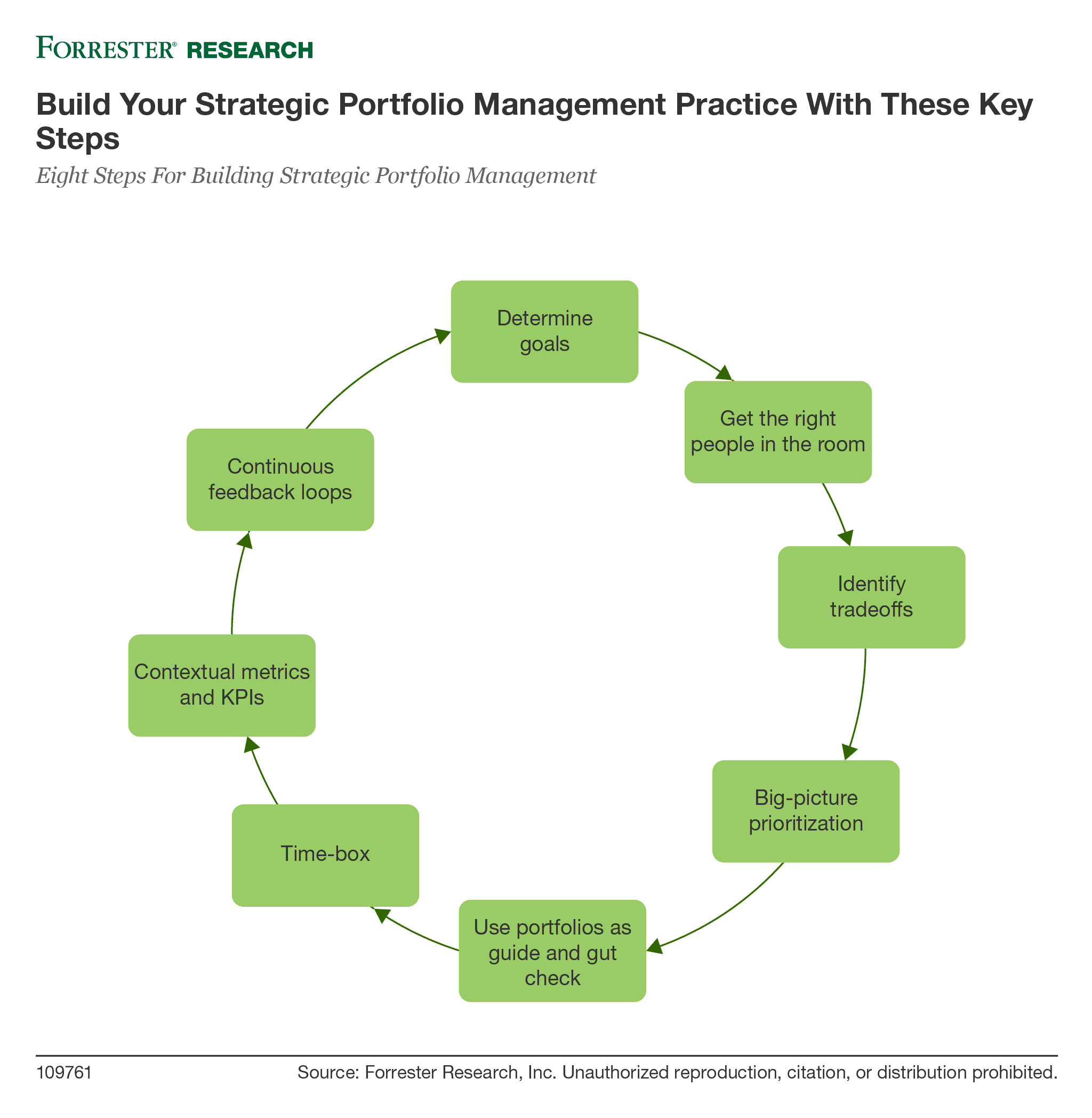
In a previous post, we discussed making better strategic decisions by using holistic planning. Simply put: portfolio planning should always start by thinking first about your desired outcomes This means that any decision to take on any new work or reprioritize work is guided by the organization’s end goals (as illustrated in Figure 2 in December 2016 Forrester Report “Eight Steps For Building Strategic Portfolio Management”).
Ultimately, this ensures the right work is getting done. But what exactly does this look like? By focusing on desired outcomes, you wind up having much better conversations with stakeholders about tradeoffs. Again, this puts you in the driver’s seat to tackle the most valuable work for the organization.
When it comes to making tradeoff decisions, here are a few questions to ask:
- Is there truly a need for this initiative?
- Are there quantifiable outcomes associated with this initiative?
- Do we have any uncertainty about this initiative?
According to Forrester “Leaders planning new initiatives must consider a number of factors to determine which will return the most value to the organization. These include identifying the need for the initiative, quantifiable outcomes, options, and areas of uncertainty. Using the portfolio to identify scenarios, companies can identify the best solution.”
Let’s also look at why it is critical to have visibility across the entire portfolio before making decisions about new projects. For example, executives will need this information when weighing the impact of new work on your resources, such as:
- Do we have the skills in-house to execute on new initiatives?
- Do the people with the right mix of skills currently have the bandwidth?
- Is outsourcing necessary at this time?
- Can the initiative wait until your people have the bandwidth?
With this in mind, the big picture becomes much clearer and it is easier to prioritize new and existing projects. Again, it’s all about choosing the work that will bring the most value. Inevitably, this process will highlight potential unplanned work that might require refocusing resources over lesser-value initiatives.
Easier said than done? Sure, but one way to accomplish this is to create and experiment with multiple “what-if” scenarios for you and your stakeholders. This helps decision-makers at all levels make better choices – especially when new work involves cross-functional teams. It also provides a clearer view of the impact of any particular scenario on resources and financials before updating your plan of action.
Want to learn more about making smarter tradeoff decisions to improve your prioritization processes? Check out the new Forrester Report, “Eight Steps for Building Strategic Portfolio Management,” to see:
- Why it is essential to have the right stakeholder in the room to prevent business outcomes from becoming political
- How you can use portfolio management for roadmap development and reality checks
- What are the key KPIs that communicate value to your the audience
How are you currently managing tradeoff decisions with stakeholders and executives? What methods are you using to prioritize the initiatives that will deliver the most value to the business? I’d like to hear from you – please share by leaving a comment below.





